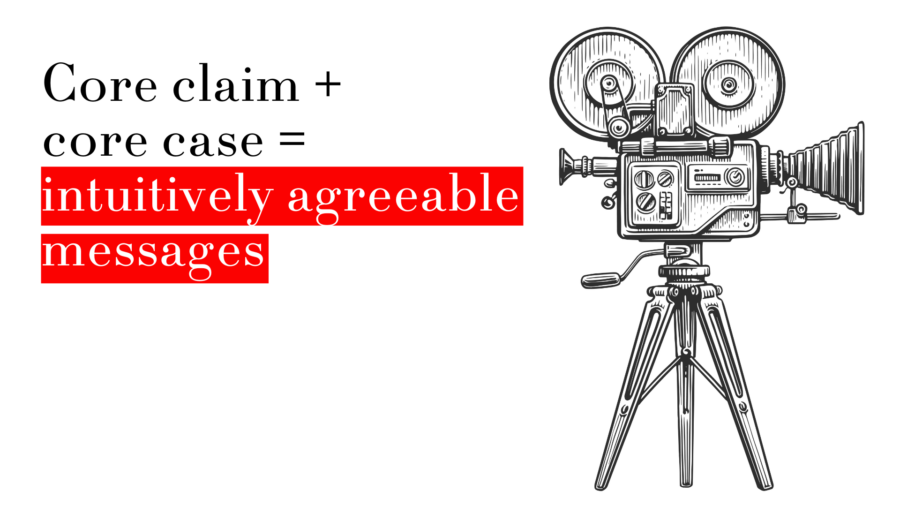How do you inspire someone to act, to change, or to think differently than they do right now?
There are two key principles at play:
- Agreement precedes action. Every action we take resolves an internal argument about why it makes sense.
- Intuition, not evidence, drives agreement. Even when we look at data, it’s our intuition that determines which data we trust and how we interpret it.
So, what does that mean when it comes to creating the foundation of your message?
Because intuition drives agreement—and agreement drives action—your message must be intuitively agreeable from the start. Here’s how you can achieve that:
The Core Claim: Your “this does that” statement. It answers questions like:
- What problem does your idea solve?
- What question does your solution answer?
A core claim is a cause-and-effect assertion, such as: “The better way to carry music with you is to make variety portable.”
But to make that case strong—to make it intuitively agreeable—somebody needs to know why that’s the better answer. And to do that, you need a core case.
The Core Case: The explanation of why your core claim is true. It relies on fundamental principles that make the claim agreeable.
For example: “Because when it comes to music, the more variety, the better. And the smaller something is, the more places it can go. How? With the iPod. It puts a thousand songs in your pocket.”
Notice how this connects the product’s features (variety and portability) to the benefit it provides (a better way to carry music).
These two elements together create a solid foundation for your message.
Now, that’s a product-based conversation, I know. But this works with ideas as well.
At the start of this message, I used these principles to say:
Agreement precedes action, and intuition, not evidence, drives agreement.
and
To inspire action, we must make our message intuitively agreeable.
Previously, I’ve called the “this does that” part of your message the “core message,” but this caused confusion. How could your core message have a core message in it? Very confusing.
To clarify:
- The Core Claim is the position you’re taking on a topic. Your thesis, your hypothesis. It’s the summary of your message—the “this does that” statement.
- The Core Case makes your claim intuitively agreeable by explaining why it works.
Simply telling someone the outcome isn’t enough. People need to know why it will work—but not in overwhelming detail.
For example, iPod customers didn’t need technical specs. They needed to understand the benefit: more variety, more portability.
Your message needs that strong foundation, too.
- The Core Question: What problem are you solving?
- The Approach: What’s your solution?
- The Principles: Why does this solution work?
So many messages miss this. But now that you know what needs to be there, you can look for this, not only in your own message, but in other messages you see around you as well.
